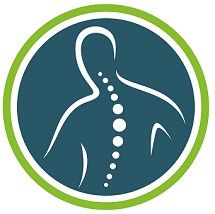Article
Combination of TNFis and NSAIDs May Slow Ankylosing Spondylitis
Author(s):
Speaking at ACR 2016, the current chair of the Spondyloarthritis Research and Treatment Network (SPARTAN) presented data that showed that a combination of inflammatory drugs may inhibit ankylosis, the painful fusion of bones.

“Different from rheumatoid arthritis, this is a disease where no bone loss can happen, really,” reminds Lianne Gennsler, MD, “The major manifestations of progression are new bone formation and ankylosis.”
Gennsler began her press conference at the 2016 American College of Rheumatology/Association of Rheumatology Health Professionals Annual Meeting by explaining why previous research had been so conflicting. When anti-tumor necrosis factor drugs (TNFis) were approved in 2003, she says, doctors knew they were treating inflammation in patients with ankylosing spondylitis (AS), but realized they may not have been “addressing the ankyloses that appeared to continue.”
After more than a decade of what Gennsler saw as mixed findings the study of both TNFis and non-steroidal anti-inflammatory drugs (NSAIDs), which had been previously used for AS, Gennsler and colleagues from the University of California San Francisco embarked on research of their own. Having already collected medication data for over 10 years in the Prospective Study of Outcomes in AS (PSOAS), they were able to longitudinally examine the effect TNFis, NSAIDs, and the two treatments in combination had on disease progression.
The study examined a cohort of 527 patients, 75% of whom were male with a baseline average age of 42 years old and an average disease duration of over 15 years. Progression was defined as an increase of two or more units in modified Stoke Ankylosing Spondylitis Spine Score (mSASSS).
NSAIDs were prevalent in 78% of the patients in the study, with TNFi use at 58%. Before adjusting for NSAID dosage, they said they found no correlation in radiographic progression. But when examining for those using 50% or more of the maximum daily dose of NSAIDs, there was.
“After propensity score adjustment, the group of patients using high-dose NSAIDs and TNF inhibitors had a 61% reduction in the odds of radiographic progression over time, with a significant P value,” Gennsler explained. She says that when isolating for groups using just NSAIDs or only TNFis, there was little noticeable difference between the two, and that the combination group of TNFi and high-dose NSAIDs showed the greatest benefit.
Though citing the inherent limitation of the study being a cohort analysis, she did point out that this was the first ever study to highlight a synergistic effect of the two treatments. Responding to a question following her speech, she postulated several reasons for this, citing animal model data indicating that NSAIDs may inhibit osteoblasts, thus preventing ankylosis.
Lianne Gennsler is the current chair of the Spondyloarthritis Research and Treatment Network (SPARTAN).
Related Coverage:
Anti-TNF Treatments for Ankylosing Spondylitis Decrease Need for Hip Replacement
Women With Spondyloarthritis Face Increased Risk of Uveitis, Other Conditions
Columbia Researchers Study Rheumatoid Arthritis, Heart Disease Link





